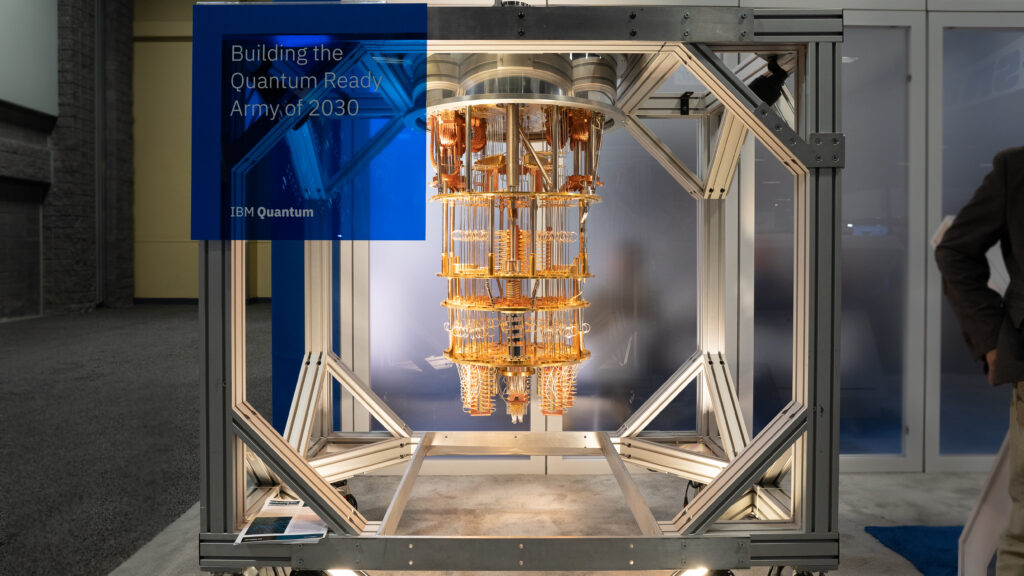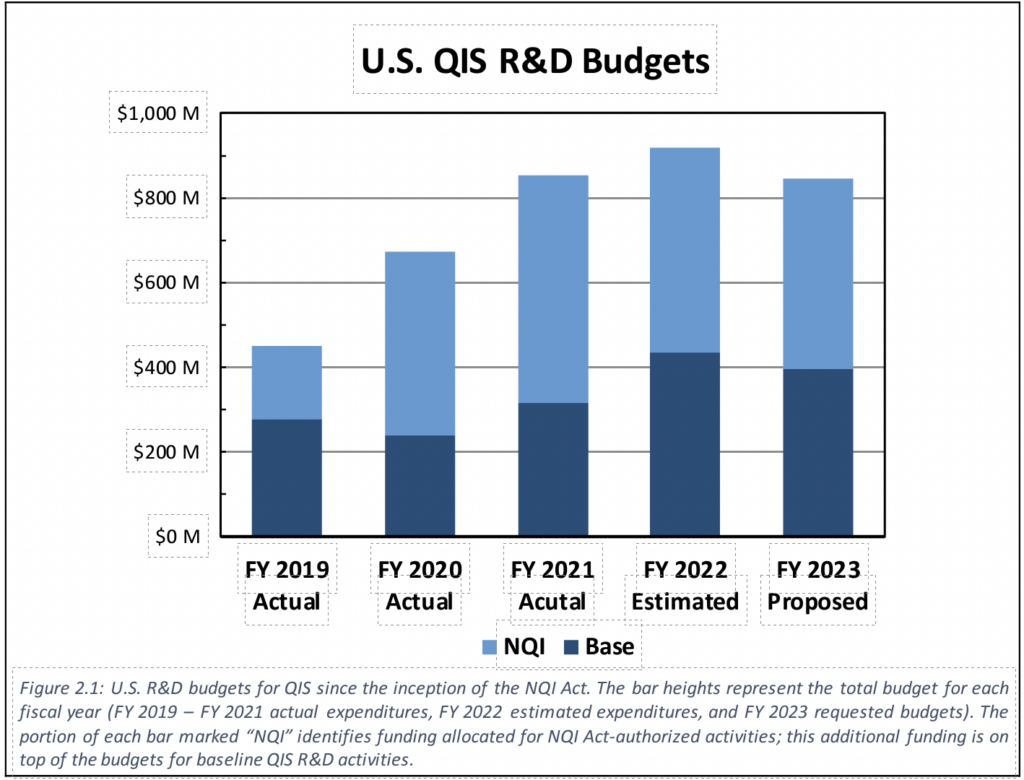WASHINGTON — The US and China are neck and neck in quantum technology, witnesses warned the House Science Committee today. And if the US is to gain the edge, officials and experts argued, Washington should step up the National Quantum Initiative’s support to academic researchers still struggling to get access to experimental equipment and to startup companies still struggling to get investors.
Quantum computing has implications across a host of national security applications, from quickly cracking traditional encryption to building ultra-precise sensors and navigation systems. But while the US government has played with the technology for years, no one can say how close it is to practical applications.
“We don’t know when quantum computers and at what scale they will start to be actually useful,” said Charles Tahan, director of the National Quantum Coordination Office in the White House’s Office of Science & Technology Policy (OSTP). “It could be the next five years. It could be longer than that.”
Which doesn’t mean the technology is being ignored. Federal funding for quantum research has roughly doubled since the National Quantum Initiative Act passed in 2018, from just over $400 million in 2019 to over $800 million in the Biden Administration’s request for fiscal 2023. (This year’s final budget figure is still in flux due to the debt deal). The private sector has invested roughly $6 billion, three times as much as the feds. But China may have invested even more — hard figures are hard to come by in an opaque, authoritarian regime — and its production of patents and publications has soared.
In fact, China is arguably ahead in actually building proof-of-concept tech, said former undersecretary of Energy Paul Dabbar, having launched a quantum communications satellite in 2016 and established a 660-mile link between Beijing and Shanghai in 2017. The authoritarian CCP is driven by the fear that the American NSA can hack existing communications, as revealed by Edward Snowden’s leaks a decade ago, Dabbar said, and the hope in Beijing is that future quantum computers can create unbreakable encryption. However, he said, “when it comes to entanglement and on the high end of distribution of quantum data and networks, the US is by far the leader.”
Yet venture capital has grown cooler about private-sector quantum companies, which have to turn cutting-edge tech into actual products, said Celia Merzbacher, executive director of the public-private Quantum Economic Development Consortium created by the National Quantum Initiative Act of 2018. While investment continues to rise, she said, the rate of increase has slowed.
“There’s a growing number of smaller pure-play quantum companies, [but] there are no big quantum companies today, [and] the venture funding seems to be slowing,” Merzbacher said. “So it’s really important at this time for government to take measures to de-risk the technology and to bridge to the quantum economy of the future.”
Academic research, likewise, is running up against practical resource constraints, said OSTP’s Tahan. For a long time, he and other experts explained, you could do meaningful quantum research without an actual quantum computer, by using conventional digital computers to simulate what a system of quantum bits (qubits) could do. But now researchers have started building better quantum computers that are too powerful to simulate, he said, which means the only way to figure out what the latest hardware can do is actually trying it out.
Researchers are “just starting to be at the point where we can’t simulate [this number of qubits] on our laptops or even on our supercomputers,” Tahan said. “[So] how do we give researchers access to the tools, that can sometimes cost $3-$5 million apiece?”
One potential solution is a “qubit foundry” that builds quantum testbeds and gives access to researchers around the country, ideally over long-distance cloud computing networks. But, Tahan said, current federal funding focuses on pure research, not subsidizing this kind of essential R&D infrastructure.
Of course, the House Science Committee — which launched the NQI legislation in the first place — made an enthusiastically receptive audience for these arguments. But even here, some congressmen sounded a note of caution about how far quantum technology really was from practical reality.
“We’re all in furious agreement on a few things,” said Rep. Jay Obernolte, R-Calif. “First of all, that the NQI should be reauthorized; second of all, that we need more people and more money.”
However, Obernolte continued, “the problem that we’re facing is that most of the potential applications for quantum computing technology are largely still theoretical. It’s great that IBM has a chip with 433 qubits on it…but we’re still going to need millions, if not tens of millions of qubits, to solve the kind of computing problems that traditional computers are unable to solve, [and] we still have some technical problems to solve, like the problem of decoherence” — the process whereby qubits lose the quantum fuzziness that makes them capable of multiple calculations at once and start behaving like everyday, deterministic particles.
There’s been dramatic progress on decoherence, OSTP’s Tahan replied. “20 years ago, when I started, [the] coherence time of one of the best qubits was a nanosecond,” he said. “Now, people at Fermilab and others are making [it to] a 100 microseconds, even a millisecond.” Likewise the number of qubits able to work together in a single quantum device has soared from a handful to hundreds.
How close is that to a usable military or commercial product? “We don’t have applications to run on those things yet to do anything useful,” Tahan acknowledged. For some applications, he said, “we know exactly how many qubits you need: The estimates are around hundreds of thousands to tens of millions.”
On the other hand, said Dabbar, you can get by with a much smaller number of qubits if you use them in a “hybrid” computer as a supplement to conventional chips like CPUs and GPUs. That’s “low-hanging fruit” for the next iteration of the Energy Department’s high-performance computing project to take on, he argued. “A heterogeneous high-performance computer… is actually something that could probably be designed into the next high performance computer today,” he told the committee.
‘The bad day’: DISA’s forthcoming strategy prepares for wartime coms
“It’s great to have internet day to day in peacetime,” said Lt. Gen. Robert Skinner, director of the Defense Information Systems Agency, “but it’s more imperative to have it when bullets are flying.”




























